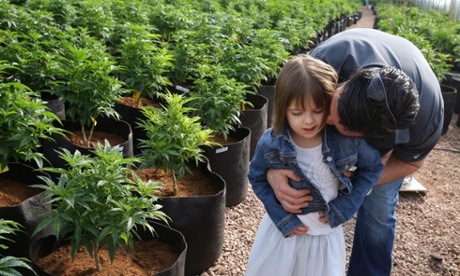
In 2014, Australia seemed to decide in the affirmative to the “whether” question for medicinal cannabis. In 2015, it will be time to think about for “whom?” and “how?”
A multi-party group – led by Greens senator Richard Di Natale, Labor MP Melissa Parke and Liberal MP Sharman Stone – has proposed a private members’ bill on medicinal cannabis. Two out of every three Australians support medicinal cannabis. Politicians supporting medicinal cannabis include Tony Abbott, NSW premier Mike Baird and Victorian premier Daniel Andrews. Retired politicians supporting medicinal cannabis include John Howard and Bob Carr.
“Why would sick people be allowed cannabis but not well people?” is a common question. There are good reasons for thinking separately about medicinal and recreational drugs. There are a number of drugs that doctors in Australia can prescribe for medicinal purposes even though their recreational use is prohibited, including morphine, amphetamine, cocaine and ketamine.
The medicinal and recreational policy framework and regulatory conditions are very different – and rightly so. The general public may have forgotten about the bad old days of snake oil salesmen selling unregulated medicines, but doctors have not forgotten the terrible exploitation and harm created by some of these medicines. A trusted supply of safe medicines is a critical part of an effective public health system – just like supplies of safe food and water and clean air.
We have heard a little about the NSW government’s plans for research on medicinal cannabis. It also plans to end police action against patients – and families who acquire it – intending to use cannabis medicinally for a terminal condition. While these are welcome developments, we don’t need more research. What we urgently need now is to start using cannabis medicinally according to the evidence.
In controversial areas of medicine, it is better to start with a somewhat restricted approach and then gradually liberalise the conditions. But policy makers will have to be ever mindful of the fact that cannabis is an easy and cheap plant to cultivate. The more restrictive and more expensive medicinal cannabis is made, the higher the proportion of patients who will use unregulated supplies.
Medicinal cannabis use is therefore a question of balance. Who should be allowed to use it? Although there is some evidence that medicinal cannabis can safely reduce severe and distressing symptoms in a range of conditions where conventional medicines have failed, the evidence is best for nausea and vomiting following cancer chemotherapy, chronic non-cancer pain (especially if due to nerve rather than tissue damage), spasticity in multiple sclerosis and wasting in cancer and HIV.
This leaves several important issues to be resolved. Which conditions will be approved? What will be the agreed minimum diagnostic criteria for these conditions? How severe will these conditions have to be? How will that be confirmed?
A group of experts will have to answer these questions and regularly return to the evidence. Another group of independent doctors will be needed to consider applications from doctors wishing to prescribe medicinal cannabis for a patient.
Among the most difficult questions are whether to use medicinal cannabis in extreme cases where there is insufficient existing evidence. The healthcare system increasingly tries to base policy and practice on evidence, but there are some conditions, such as intractable epilepsy in childhood, where there is abundant anecdotal information but no rigorous published research. What should doctors do in cases like these where compassion demands flexibility but existing evidence is inadequate? It is not clear what the best answer is to this question but it’s clear that the worst answer is to hand this problem over to politicians.
The thorniest questions involve supply. What sort of cannabis preparations should be used? How should these be administered? Most doctors reject inhalation of cannabis smoke as a way of delivering a medicine, except perhaps in some patients near death. But inhalation of cannabis smoke does have the advantage of rapid absorption thereby enabling patients to titrate their right dose – enough to reduce the unpleasant symptoms but below the dose required to produce unwanted intoxication.
The 60 or more main ingredients of cannabis responsible for its mood altering effects are very fat soluble but dissolve poorly in water. Consequently, cannabis is poorly absorbed in the watery environment of our digestive system unless suspended in a fat or oil. The older pharmaceutical preparations of cannabis failed to gain a market because their absorption was too slow and unpredictable. Sativex, the new pharmaceutical cannabis preparation taken by spraying the inside of the mouth, has many attractions. But at about $500 a month, it is likely to be unaffordable for most patients, especially those suffering from a long-term illness. Gently heated botanical cannabis vapourises the psychoactive ingredients which can then be inhaled. Portable vapourising devices, the size of a fountain pen, are now readily available and affordable.
The private members’ bill sensibly recommends setting up an Office of Medicinal Cannabis similar to the Therapeutic Goods Administration (TGA). Cannabis should be regulated as a medicine but the TGA is not the right organisation to do this.
Amid all the discussion, it will be hard to remember that medicinal cannabis is, and always has been, about how a civilised and compassionate country can do its best to reduce suffering.
